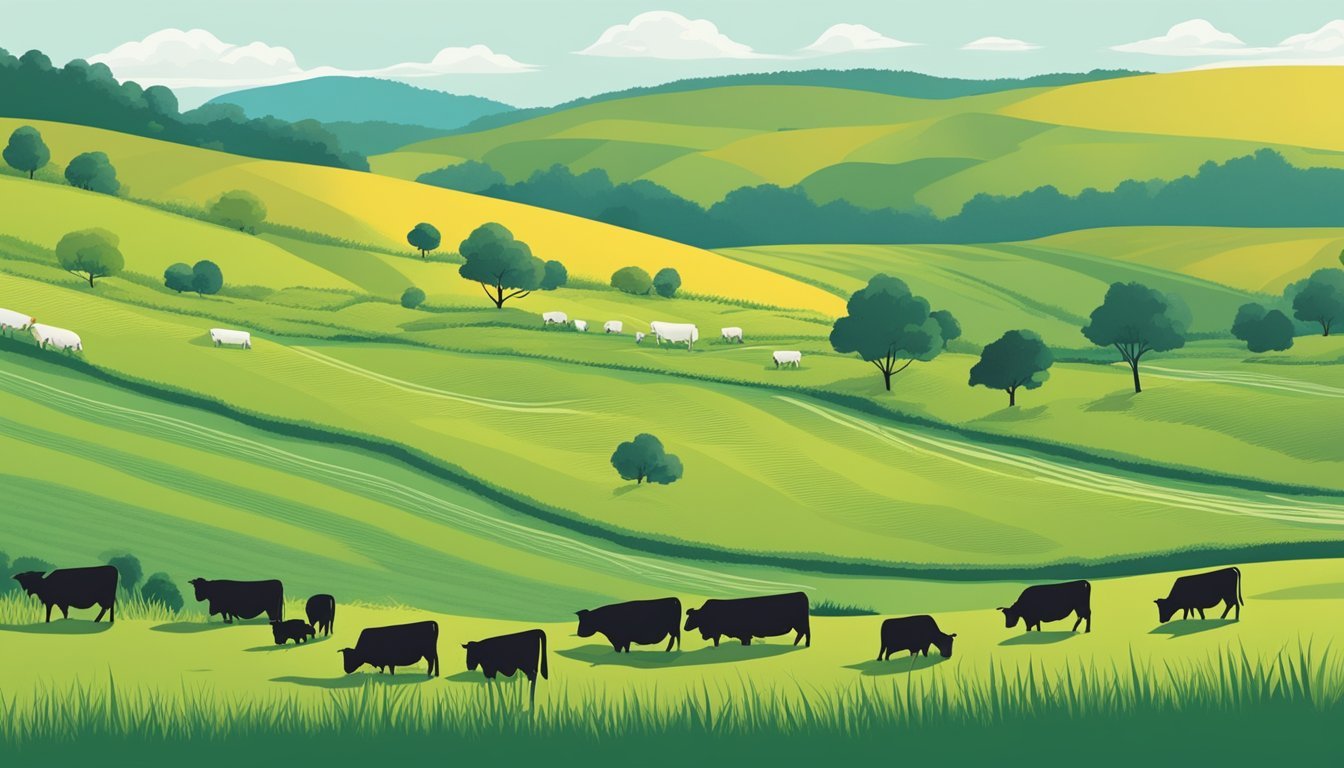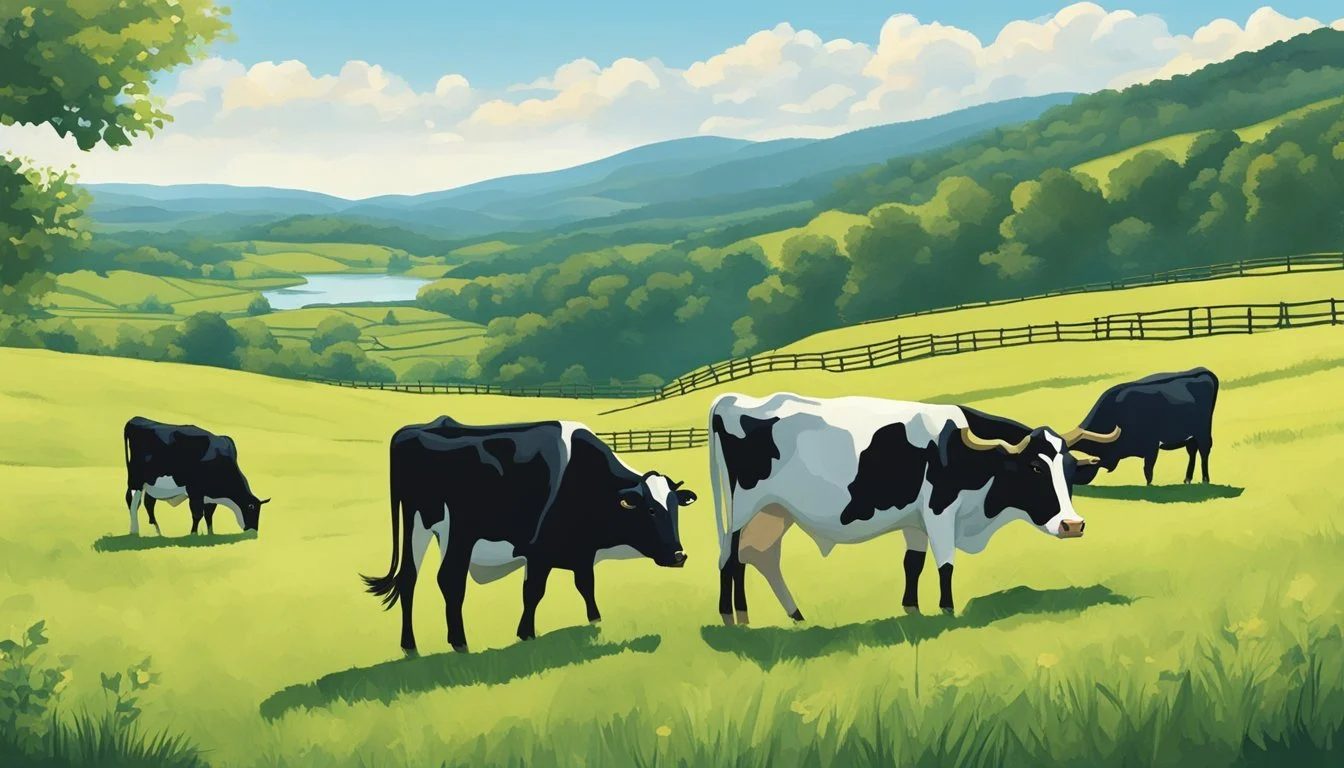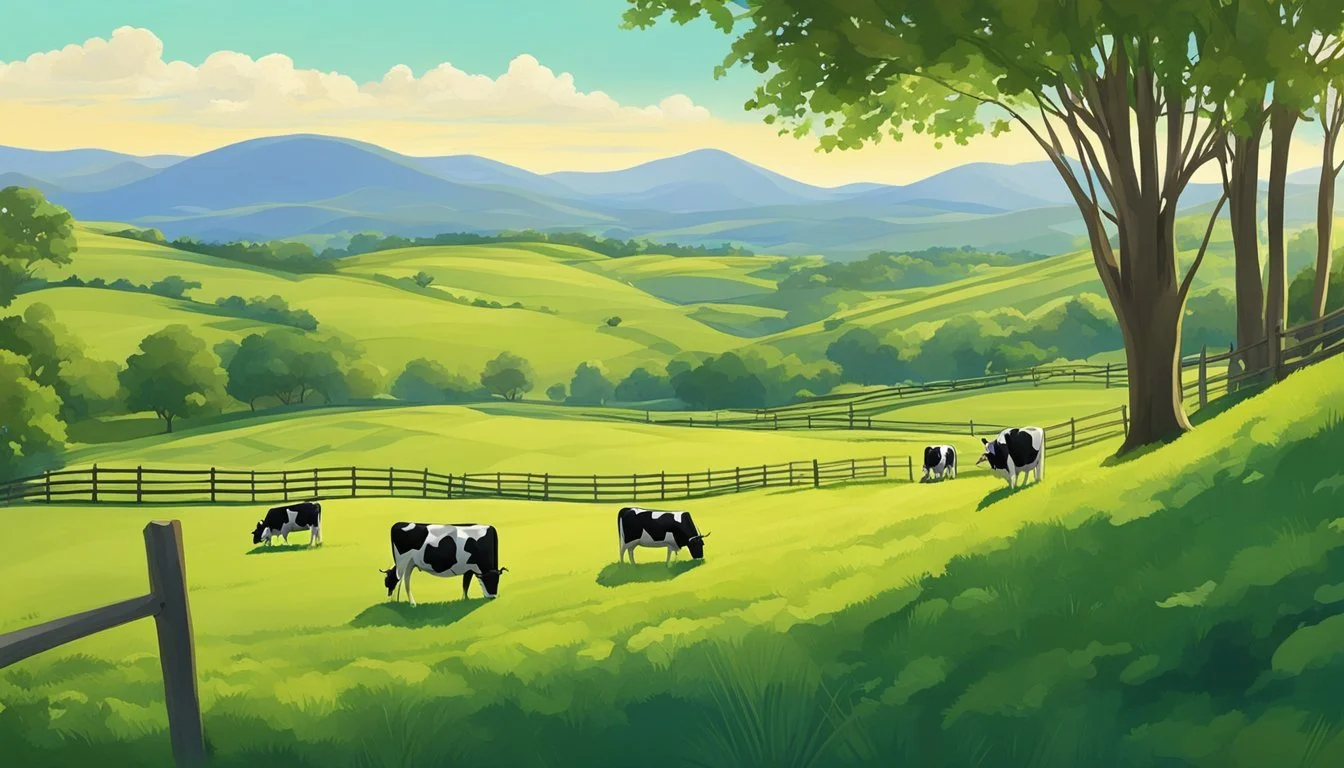Stocking Rate Tennessee
Optimal Cows Per Acre for Sustainable Grazing
Determining the appropriate stocking rate is crucial for the sustainability of both the land and cattle herd. In Tennessee, as elsewhere, this rate involves balancing the number of cows with the available acreage to avoid overgrazing, which can lead to soil erosion and reduced forage quality. The stocking rate will vary based on several factors, including the quality of the pasture, the forage management practices, and the breed and size of the cows.
Farmers in Tennessee must consider the state's specific climatic conditions and terrain, which influence forage production. Local agricultural extensions offer guidelines and resources to help estimate the amount of land required to support a cow-calf pair or a certain number of cattle. Typically, in the varied Tennessee landscape, more fertile areas might support higher stocking rates, while less productive land will require more acres per cow.
They should also take into account the rotational grazing practices, which can impact the stocking rate by allowing pastures time to recover, thereby supporting a greater number of cattle over time. Resourceful management, such as providing supplemental feed during leaner months, can optimize the use of the land without degrading it. By doing so, farmers ensure a productive operation while maintaining the health of their pastureland.
Understanding Stocking Rate
Stocking rate is a critical concept in pasture management and refers to the number of livestock units per acre that a field or farm can sustainably support. In Tennessee, determining the appropriate stocking rate is essential for balancing animal health, economic viability, and pasture longevity.
Animal Units (AUs) and Animal Unit Months (AUMs) are standard measures used to calculate stocking rates. One AU typically represents a 1,000-pound cow with or without a calf by her side. An AUM denotes the amount of forage a standard AU would require in one month.
The ideal stocking rate varies due to factors such as:
Forage quality
Climate conditions
Pasture size
For effective pasture management, utilization rate— the percentage of forage that livestock consume relative to what's available — must be balanced. Proper management practices include rotating pastures and monitoring forage availability to ensure that the stocking rate remains within a sustainable range.
Adjusting stocking rates is necessary when:
Forage production fluctuates seasonally.
Climatic variations affect pasture growth rates.
Livestock weight or type alter forage demand.
Stocking density, which differs from stocking rate, refers to the concentration of animals in a given area at one time, impacting grazing patterns and pasture health.
Farmers must continuously assess and adjust their stocking rates based on the conditions above to maintain an equilibrium between livestock needs and pasture resources.
Determining Stocking Rate for Tennessee
In Tennessee, the stocking rate is crucial for sustainable livestock management. The rate varies due to factors such as forage production, pasture size, and climate. Tennessee's diverse climate affects forage production with variable precipitation influencing grass and legume yield.
Forage Production: Tennessee pastures primarily consist of cool-season grasses and legumes. The state's annual precipitation of approximately 50 inches benefits forage growth.
Land Evaluation: The first step in calculating the stocking rate is to assess the acreage and quality of the available pasture. Pasture size directly correlates with the number of cows it can support.
Yield and Climate: Next, one must consider the average forage yield, which depends on local climate conditions. Yield estimation accounts for seasonal changes and helps ensure pastures are not overgrazed.
Stocking Rate Calculation: The basic formula for determining stocking rate is:
Total Forage Available (lbs) ÷ Forage Consumption per Cow (lbs) = Stocking Rate (cows per acre)
This calculation is adjusted for Tennessee's conditions by considering:
Precipitation patterns
Grass and legume varieties
Seasonal growth rates
Farmers must regularly monitor forage availability and adjust stocking rates to maintain pasture health. Responsible managers track yield changes due to Tennessee's variable weather to adapt their stocking rate accordingly.
By considering these variables, farmers in Tennessee can arrive at a sustainable stocking rate, ensuring the health of their herds and the long-term productivity of their pastures.
Stocking Rate Factors
To effectively determine stocking rates in Tennessee, one must consider various interrelated factors ranging from forage availability to soil health. These elements directly impact how many cows a property can support.
Forage Availability
Forage Production: Pasture conditions in Tennessee can vary, but generally, the region can sustain a diverse mix of grasses and legumes. Forage production hinges on the quality of the pasture, which dictates the amount of forage available for grazing.
Grass: Primary forage source for cattle, with production levels influenced by soil fertility and pasture management.
Legumes: Adds nitrogen to the soil and provides high-protein forage, complementing grass production.
Animal Requirements
Forage Consumption: The nutritional needs of cattle must match the forage availability on the property. One cow typically requires around 2 to 2.5% of its body weight in forage daily.
Lactating Cow: Increased nutritional demands that may require supplemental feeding if forage is insufficient.
Dry Cow: Lower nutritional requirements, which can be met with existing pasture forage under optimal conditions.
Climate and Weather Patterns
Climate: Tennessee weather patterns affect forage growth through the availability of sunlight and precipitation.
Precipitation: Adequate rainfall is crucial for maintaining healthy forage growth. Drought conditions can lead to reduced forage yields and necessitate a lower stocking rate.
Soil Composition and Health
Soil Health: The state's soil condition is a determining factor in supporting a healthy forage base for cattle.
Soil Degradation and Compaction: Can lead to reduced forage production and may require soil amendments to restore fertility.
Soil Fertility: Directly correlates with the quality and quantity of forage a pasture can produce, influencing the number of cows per acre a property can support.
Each of these factors must be assessed in coordination to establish an appropriate stocking rate that supports sustainable pasture management and animal health.
Calculating Carrying Capacity
To determine how many cows a property in Tennessee can support, one must first assess the concept of carrying capacity. This is the maximum number of animals the land can sustain without degradation. Carrying capacity is closely tied to the forage yield of the pasture.
Forage yield is often measured in pounds per acre and can vary significantly based on soil fertility, forage species, climate, and management practices. Animal units (AU) help standardize livestock requirements, with one AU equating to one 1000-pound cow with or without a calf. The amount of forage an AU needs in a month is called an animal unit month (AUM).
The stocking rate is the number of animal units per acre that the land can sustain. It is a crucial factor in maintaining the health of both animals and pasture. One calculates the stocking rate by comparing the available forage yield to the number of cows planned to be grazed.
For calculation, assume an average forage availability in Tennessee. Here’s a simplified example:
Average Forage Yield: Determine the pounds of available forage per acre.
Animal Unit Consumption: Estimate the monthly forage requirement for one animal unit.
Pasture Efficiency: Factor in a percentage to account for forage that isn't consumed or is lost.
Component Calculation Forage Yield pounds of forage per acre Animal Unit Month forage needed for 1 AU per month Pasture Efficiency % of pasture that can be used Stocking Rate (Forage Yield * Pasture Efficiency) / AUM
One typically assesses the acreage, taking into account the seasonality of forage growth, to set a sustainable number of cows per acre. For instance, fewer cows per acre would be appropriate for land with lower forage yield to avoid overgrazing.
Proper evaluation of these elements will assist a landowner in making informed decisions and maintaining an optimal balance between the number of cows and the pasture's health.
Grazing Management Practices
Effective grazing management practices are essential for maintaining soil health, optimizing forage growth, and supporting a sustainable number of livestock. In Tennessee, careful consideration of the land's carrying capacity and the appropriate grazing technique is imperative.
Rotational Grazing
Rotational grazing involves dividing pasture land into smaller sections, called paddocks, and moving cattle between them systematically. This method allows forage plants to recover after grazing, reduces soil compaction, and can improve pasture productivity. Management is crucial as it dictates the rotation schedule, which is often based on forage availability and the specific grazing season.
Paddock Design: Often depends on land size and shape.
Rotation Schedule: Can be daily, weekly, or monthly.
Recovery Period: Typically ranges from 15 to 45 days.
Continuous Grazing
Continuous grazing allows cattle free access to a given pasture for the entire grazing season. This approach requires less labor compared to rotational methods but can result in overgrazing and diminished forage quality. Proper management must ensure that the carrying capacity aligns with the number of cattle to prevent degradation of the pasture ecosystem.
Stocking Density: Must be monitored to avoid overuse of forages.
Land Assessment: Regular monitoring can identify areas of overuse.
Multi-Species Grazing
Multi-species grazing incorporates different types of livestock, each with unique grazing behaviors, onto the same pasture. This can optimize the utilization of the available forage, minimize the weed population, and interrupt parasite life cycles. Diverse grazing management strategies are involved to accommodate the various dietary needs and grazing patterns of the species.
Forage Utilization: Increases due to varied grazing habits.
Parasite Control: Natural because of the incompatibility of host and parasites between species.
Livestock Types and Their Impact
Different livestock types exert varying pressures on pasture resources, and the impact of these animals on land can significantly affect how many of a given species the land can support. Specific wildlife or livestock such as cattle, sheep, and goats have distinct grazing behaviors and feed requirements.
Beef Cattle vs. Stocker Cattle
The two main categories of cattle in Tennessee are beef cattle and stocker cattle. Beef cattle are typically raised for meat production and can range broadly in weight, which affects stocking density. Beef cattle require more forage and thus may reduce the number of cows per acre the property can sustainably support. In contrast, stocker cattle are generally younger animals raised primarily on pasture before entering a feedlot, with less impact per animal compared to mature beef cattle.
Beef Cattle: 1 cow per 1-2 acres (varies based on pasture quality)
Stocker Cattle: Higher stocking rate possible due to lighter weight
Influence of Breed on Grazing
The breed of cattle is a critical factor in determining grazing impact. Certain breeds of beef cattle consume more forage due to larger body sizes, while others, such as those adapted to harsher environments, may be more forage-efficient.
Large Breeds: e.g., Charolais, require more acreage
Small to Medium Breeds: e.g., Angus, might be more efficient in forage use
Breed Adaptability: Consideration must be given to how a breed thrives in the local Tennessee climate and forage availability
Small Ruminants Effect
When discussing livestock impact, one cannot overlook the role of smaller ruminants like sheep and goats. They often require less space and forage than cattle.
Sheep and Goats: They can often be stocked at a higher density, sometimes up to 5-10 animals per acre, though this heavily depends on pasture quality and management practices.
The type and breed of livestock on a Tennessee farm drastically influence how many animals the land can support. Recognizing these differences is paramount for proper stocking rate decisions.
Pasture Maintenance and Improvement
To optimize the stocking rate in Tennessee, maintaining pasture health is crucial. It is imperative to prevent overgrazing, apply effective forage improvement techniques, and manage soil fertility to sustain high-quality forage yield while preserving biodiversity.
Preventing Overgrazing
Overgrazing can significantly damage pasture condition, leading to an increase in weeds and a decrease in desirable grasses and legumes. One key strategy is to monitor grazing intensity and distribution. This involves rotating livestock between pastures to allow forage to recover (rest-rotation grazing), adjusting stocking rates according to forage availability, and ensuring even grazing patterns across the land.
Forage Improvement Techniques
Improvement of pasture forage can result from a combination of methods. Seeding a mixture of desirable grasses and legumes can enhance biodiversity, which in turn can increase the resilience of the pasture and yield. Additionally, implementing a targeted management of undesirable plants through mowing or spot-treatment with herbicides can reduce competition for nitrogen and other nutrients.
Soil Fertility Management
A solid fertility program is essential to support productive pastures. Regular soil testing allows for tailored fertility management, ensuring balanced soil fertility levels. The application of fertilizers, particularly nitrogen, should be synchronized with plants' growth rates to optimize uptake and prevent runoff. Strategic application of manure and compost can also improve soil structure and enhance nutrient content.
Environmental Factors and Sustainability
Determining the sustainable stocking rate in Tennessee requires careful consideration of various environmental factors. Climate plays a significant role as it affects both precipitation levels and the length of the grazing season. It is vital to monitor annual precipitation to maintain adequate forage availability and prevent soil degradation.
Soil Health: Soil is fundamental for forage production. Healthy soil supports biodiversity and promotes better water retention.
Desertification: Overgrazing can lead to desertification, a risk that mandates balanced grazing utilization.
Monthly Production: Cattle should be moved according to monthly forage production, which is influenced by rainfall patterns.
Tennessee's climate, characterized by humid summers and mild winters, enables a relatively long grazing season. Yet, climate change introduces variability; extended droughts or heavy rainfall can swiftly alter the carrying capacity. The practice of rotational grazing can mitigate the risk of overgrazing and soil compaction, which is often caused by cattle trample.
Management strategies must therefore include:
Regular assessments of forage depth and quality.
Adjustments to stocking rates in response to changes in annual precipitation and forage availability.
An adequate balance between livestock numbers and acreage ensures long-term sustainability. Adherence to these guidelines will help maintain the ecological balance, prevent soil degradation, and optimize livestock production in Tennessee's diverse agricultural landscapes.
Economic Considerations
When determining the appropriate stocking rate for property in Tennessee, it is important for a producer to consider the economic implications. The United States Department of Agriculture (USDA) Economic Research Service provides valuable data that can guide decisions, reflecting cattle market trends and cost of production analyses.
The number of head of cattle an acre can support is influenced by commodity prices, input costs, and potential yields. These parameters dictate whether the operation can be profitable while maintaining sustainable land use practices. For instance, if market prices are low, overstocking might appear as a solution to generate more revenue but this can lead to increased feed costs and land degradation, ultimately harming long-term profitability.
Producers should examine the following:
Feed costs: How much supplemental feed will be required considering the number of cattle per acre?
Veterinary expenses: Larger herds may lead to higher healthcare costs.
Infrastructure: Does the property have adequate fencing, water sources, and shelter?
Management practices: Are there additional labor costs associated with managing more cattle?
A balance must be found between the number of cattle and the property's capacity to support them without incurring excessive costs. According to the USDA Economic Research Service, efficiency in cattle production hinges on optimal stocking rates that align with economic and environmental sustainability.
Careful financial planning and budgeting are imperative. Producers should create projections based on different stocking scenarios to identify the most economically viable option. This strategy aids in avoiding costly overstocking mistakes and ensures that the property can support the cattle over time without depleting resources.








